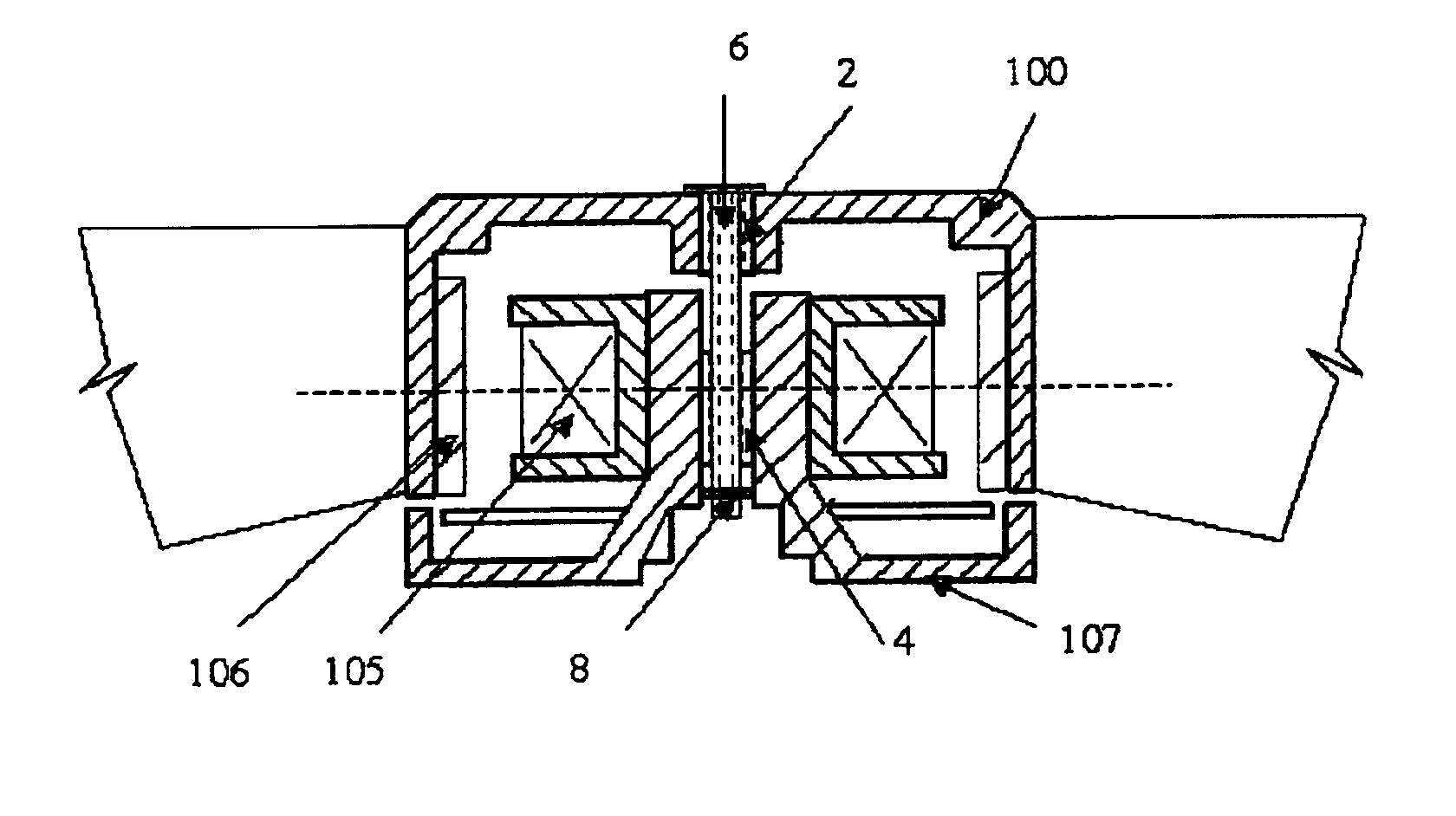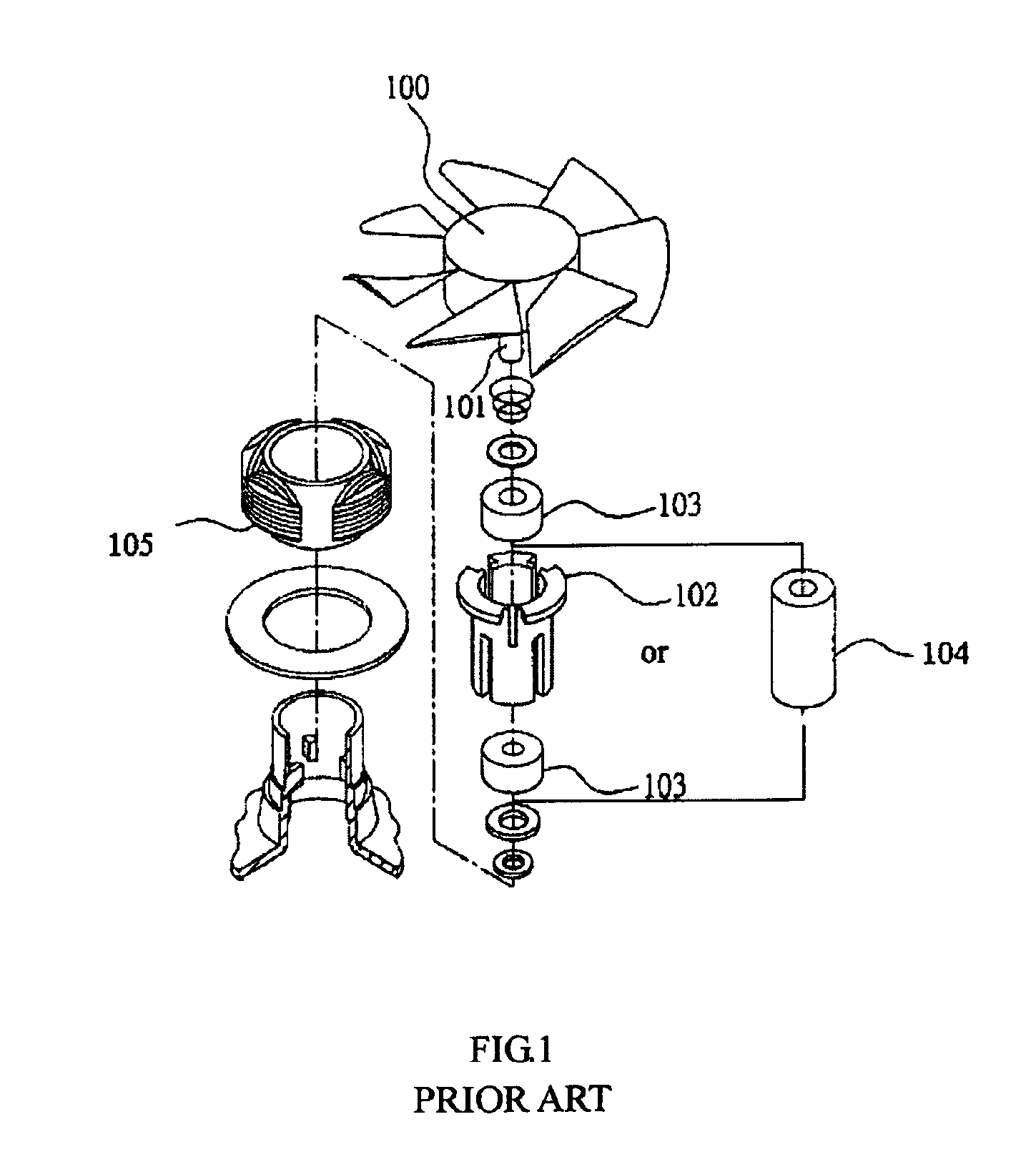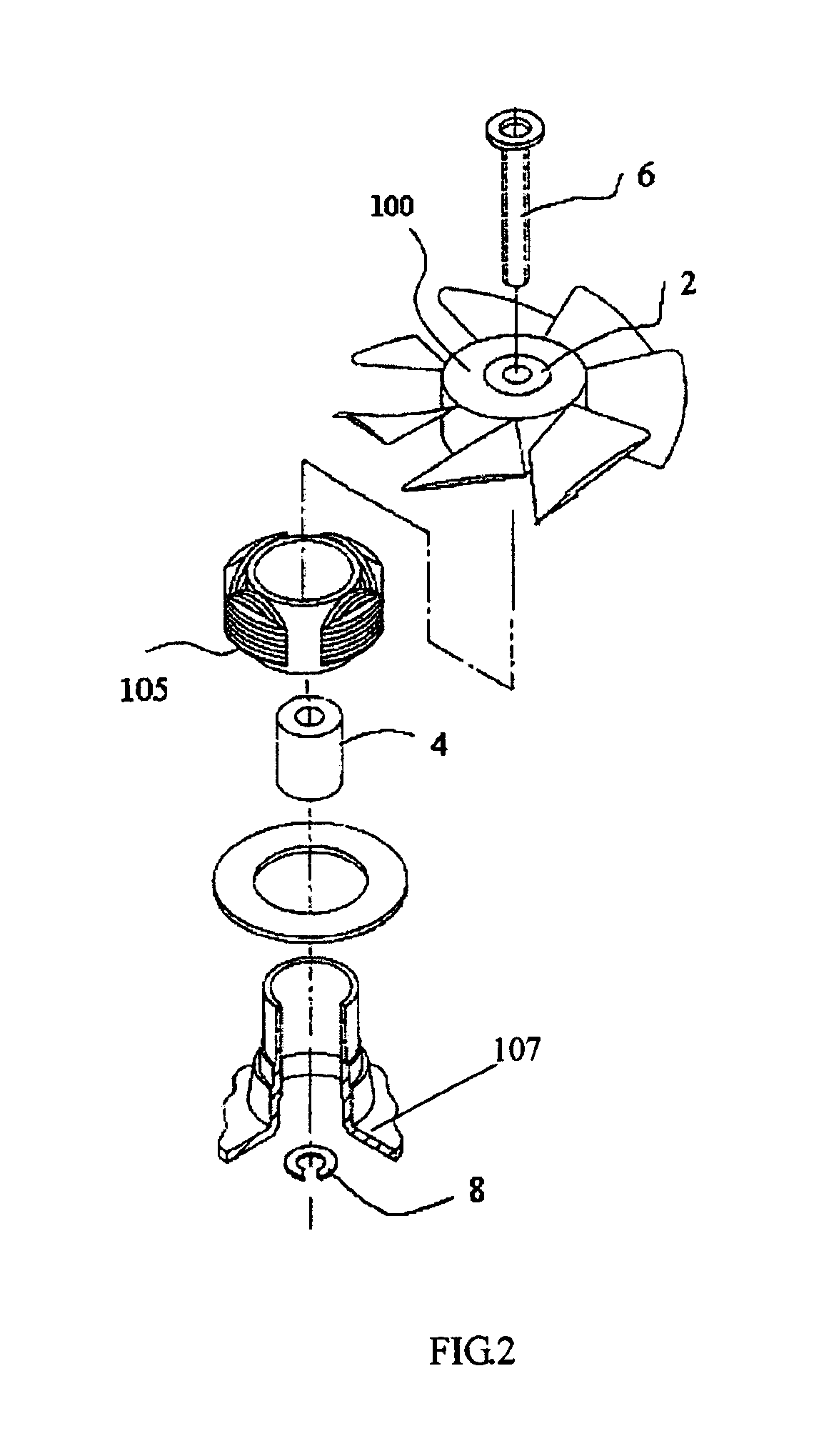Rotation support of heat-dissipation fan
a technology of rotation support and heat dissipation fan, which is applied in the direction of propellers, propulsive elements, water-acting propulsive elements, etc., can solve the problems of fan instability, abnormal heat and loud noise, and generating vibration, so as to reduce surface contact area, reduce friction, and high speed rotation
- Summary
- Abstract
- Description
- Claims
- Application Information
AI Technical Summary
Benefits of technology
Problems solved by technology
Method used
Image
Examples
Embodiment Construction
[0020]FIG. 2 shows an exploded view of the present invention. Hollow ceramic tube bearing 2 passes through and is concentrically and fixedly attached to fan rotor 100, thereby rotating with the rotor. Hollow ceramic tubular support bearing 4 is fixedly mounted onto fan base 107. Axle tube 6 is cylindrical in shape, or with an end flange portion, forming a T-shaped (in cross-section) tube, which passes through the inside of bearing 2 and support bearing 4, and rotates slowly and asynchronously with rotor 100. Ceramic holding ring 8 has an opening or gap, and is installed at the end of axle tube 6, opposite rotor 100, to limit axial movement of axle tube 6.
[0021]When the fan is energized and rotating, bearing 2 rotates with rotor 100, and axle tube 6 is carried forward asynchronously, thereby rotating slowly within bearing 2 and support bearing 4. Since bearing 2 and axle tube 6 are rotating at different speeds in the same direction, this will greatly reduce friction and increase fan ...
PUM
 Login to View More
Login to View More Abstract
Description
Claims
Application Information
 Login to View More
Login to View More - R&D
- Intellectual Property
- Life Sciences
- Materials
- Tech Scout
- Unparalleled Data Quality
- Higher Quality Content
- 60% Fewer Hallucinations
Browse by: Latest US Patents, China's latest patents, Technical Efficacy Thesaurus, Application Domain, Technology Topic, Popular Technical Reports.
© 2025 PatSnap. All rights reserved.Legal|Privacy policy|Modern Slavery Act Transparency Statement|Sitemap|About US| Contact US: help@patsnap.com



